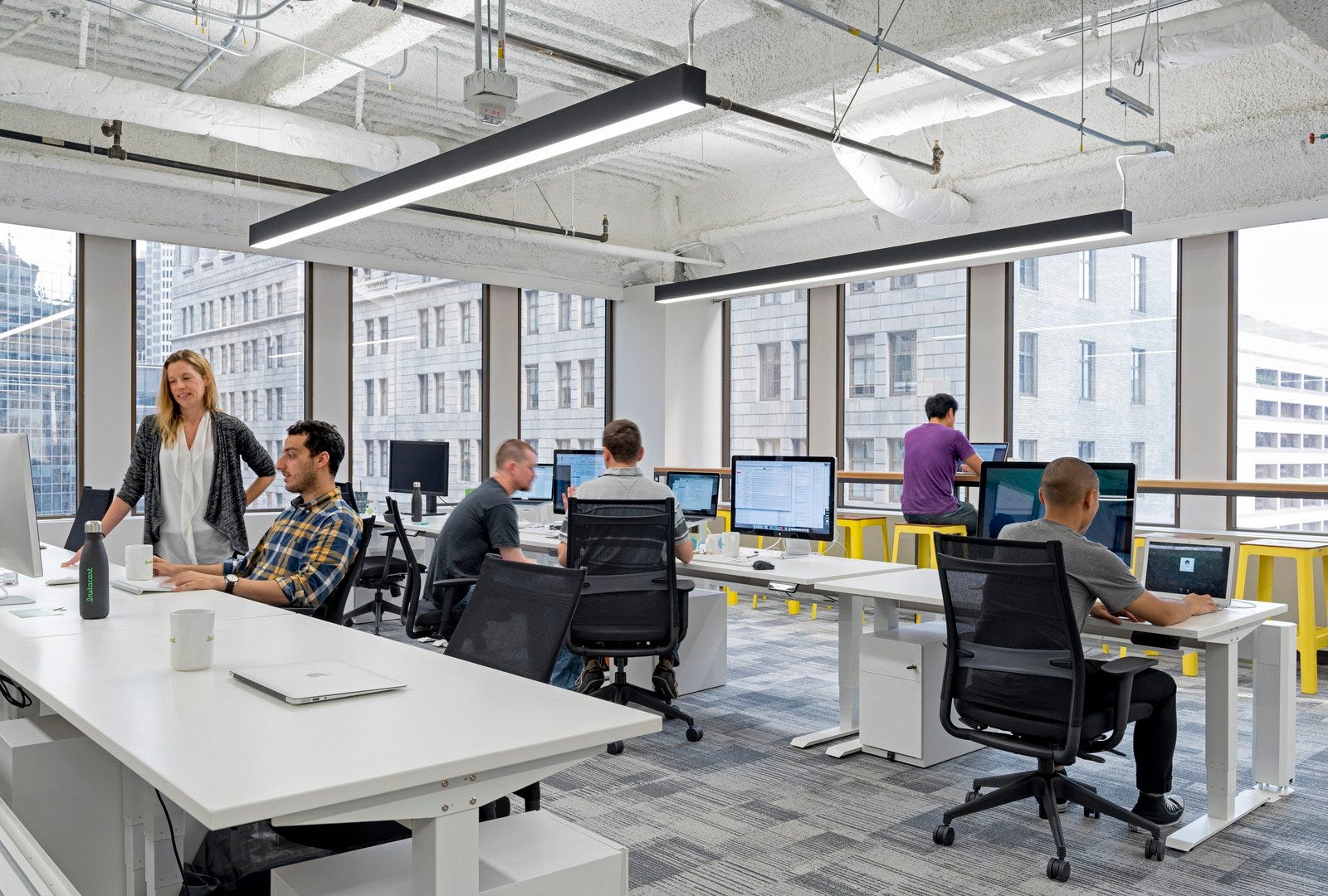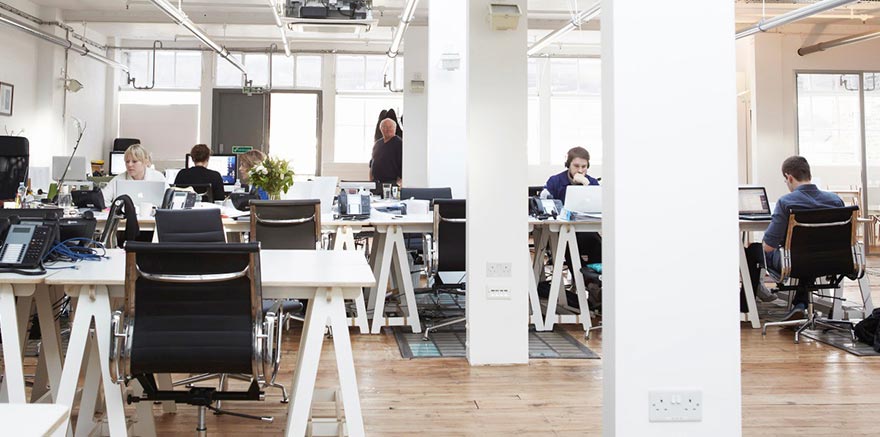When was the last time you heard water cooler chatter about who’s got the corner office? If you’re drawing a blank, it’s no wonder. An estimated 70 percent of U.S. offices today have no or low partitions, according to the International Facility Management Association. The trend toward the open office space, which first emerged in Silicon Valley startups like Facebook and Google, has become an entrenched aspect of office culture for a majority of U.S. workers. But is it the most effective way to work? And if so, for whom?
How personality drives workspace preference
Our work environment plays an enormous impact on our productivity. And the type of environment in which we thrive best depends, in large part, on our personality. Consider, for instance, the “visionary”. Typically, this person prefers to work in the presence of colleagues with whom he or she can share goals and ideas. Then there are “action takers.” These workers often like to structure their own environment and work independently, and may not see the benefit of sitting in an open space with several or even dozens of colleagues. Usually, “inventors and analyzers” work well with a small group of like-minded collaborators; therefore, they’re likely to respond favorably to an open space that allows for an easy exchange of ideas.
Given the strong link between personality and work environment, it benefits both job candidates and employers to exchange information during the interview process about an office’s work space. If a job candidate finds an office environment intolerable, for instance, there’s no point in taking the job. And, if an employer determines — prior to making an offer — that a job candidate will likely clash with the office environment, that information can prevent wasted time in training a new employee who probably won’t last long on the job. But, how to know?
Using advanced technology like Traitify’s Personality API, a psychology-backed assessment comprised of a diverse set of visual assessments to uncover personality types and traits, employers can get a feel for a job candidate’s personality and, in turn, gauge whether or not they’ll thrive in their given work environment — before they make a hiring decision.

Why the rise of the open work space
In the early 2000’s, open work spaces began to replace cubicles across the American workplace landscape. The open space design was touted for its conduciveness to collaborate and brainstorm. But some argue that cost, or rather cost savings, was the primary reason for the change.
Regardless of why open work spaces came into vogue, the bottom line is that they do make it easier to swap ideas and problem solve with colleagues. That’s particularly important in certain industries, and for employees who thrive on collaboration. But what about workers who crave quiet areas for thinking, and who require private space for confidential professional conversations?
Factors to consider before opening up the office
For many companies, it’s essential that employees can access one another easily for the sake of collaborating and problem solving. From that perspective, the open work space is a no-brainer. But what happens when you put 10, twenty, or even forty employees in a room with few to no barriers to cut down on noise and other disruptions?
It can be very hard to concentrate. In fact, attempting to cope with persistent noise has been shown to go so far as to wreak havoc on employees’ health. A study by Cornell University determined that being exposed to high levels of noise in the workplace can lead to an uptick in a person’s epinephrine — the hormone responsible for the ‘flight or fight’ response — in turn causing an increase in stress levels. This is not the only data to suggest the challenge created by workplace noise, which is indeed exacerbated by an open work space. A Harvard Business Review study, which polled 40,000-plus U.S. employees, cited a “lack of sound privacy” as the most challenging environmental factor in an office setting.
To combat noise in an open office space, many employees reportedly turn to head phones, thereby essentially blocking out extraneous noise so that they can focus on their work. But that defeats the purpose of creating a collaborative environment. What, then, is the answer?

Finding the right mix
While no two companies’ environmental needs are identical, most offices benefit by a mix of open and private space. Having some open work space where employees can easily gather to exchange ideas on a regular basis is optimal. So too is having, in the same office, private breakout rooms where a small group of employees can problem solve without disturbing others whose work requires quiet concentration. And while it’s often essential for folks in management-level positions to have an office to which they can retreat and work quietly or conduct one-on-one meetings, it’s equally important that they spend time among their employees — wherever in the office that may be.
As employers contemplate the type of space that works best for their companies, it’s optimal to keep in mind the fact that the ideal work space for one employee or department may not be the preferred type of space for another employee or department. Conceptualizing work space based on employee needs, then accommodating accordingly, creates the most ideal work setting.
Want to find out more about your work personality? Try our careers assessment .




 Subscribe to Our Blog
Subscribe to Our Blog 
